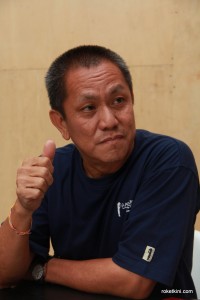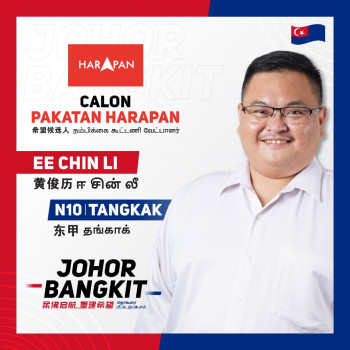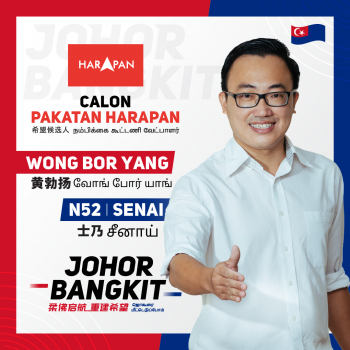(This is the part two of the muhibbah story we featured in “Marriage in Malaysia”. To read the article, please go to http://www.therocket.com.my/en/marriage-made-in-malaysia/)
He loves to take pictures. His specialty is in the cultural spots and artifacts. Every shot, every frame – a portrait of a living story. Language and skin colour is no barrier for a seasoned photographer like him. It actually motivates him to bring out the diversity and vibrancy etched in his subjects.
And it shows in his diversity. His ability to speak fluent Bahasa Indonesia and enunciate Kelantanese accented Bahasa Malaysia belies the fact that Malay is not even his first language, at home or school!
David Lok Weng Sung, 53, is a photographer in the advertising industry. David, as he prefers to be called, is widely known even outside the advertising loop.
Gazing at his work at first glance, one gets the impression its commonplace and randomly ordinary. Yet look a little deeper, one sees a luminous cultural and ethnic heritage, evincing a profound cultural story behind it.
The truth is, this self-confessed kampong boy at heart didn’t get his cultural instinct overnight. “I began to open my mind and heart to my environment step by step, learning from the different cultures that surrounded me.”
His familiarity with the Malay culture and language didn’t come at a snap either. It wasn’t just from the schooling environment that he grew up in. It was moulded by his three life phases, going through much trial and error in his colour-filled life.
Born and bred in Chinese-majority Seremban, David did his elementary education in the now defunct English-medium primary school system. Schooling years was multicultural; Chinese, Malays and Indians mixing side by side each other without misgiving. It was the first milieu that afforded him his understanding of other cultures. However it was still an English speaking environment.
“It was around 1969 that the emphasis on Malay started taking place. I was already in Standard Three then. Though we had BM classes, it was still English everyday for us then.”
Growing up in a Cantonese speaking home and English-fused schooling surrounding, David had little interaction in Malay. That change when he was 18 years old, the year he went to Singapore for studies after his secondary school graduation. The irony was he picked up Malay in the Chinese-majority city state.
David was a construction site manager then. Leading a group of Malay workers, “I found myself in many an awkward situation as my Malay was smattering and scant,” he recalls.
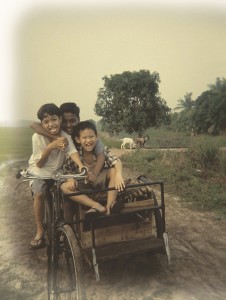 “Many times, they would tell me ‘that’s not how the Malay syntax and words were pronounced’. Apparently what I learnt in school was stilted and foreign to them (laughs)! I began to learn Malay from them, word by word, through meals and interactions. That was my first real contact with the Malay culture.”
“Many times, they would tell me ‘that’s not how the Malay syntax and words were pronounced’. Apparently what I learnt in school was stilted and foreign to them (laughs)! I began to learn Malay from them, word by word, through meals and interactions. That was my first real contact with the Malay culture.”
“Due to my poor SPM results in Malay (I failed actually), I had to take after-work Malay classes in order to really learn the language. Thank goodness for my Malay co-workers, through their willingness to teach me and accept me into their circle of friends, I was able to brush up my Malay and actually learned more about their culture.”
After staying in Singapore for more than a year, David was able to speak Malay fluently. Finding himself in Indonesia not long after that, he too mastered and loved Bahasa Indonesia. It was at the work place that he also began to learn Mandarin, a language as alien to him as BM!
“The situation then was a hodgepodge of languages; when I spoke to my boss, it was in English. With the Indonesian workers it was Bahasa Indonesia, with the expatriate Taiwanese engineers it was Mandarin. I got my languages so mixed up that there was once when I flew home for reunions, some family members met me and shouted Cantonese to me. I was actually tongue twisted for answer; my brain couldn’t utter a single Cantonese in return! (laughs)”
Staying in Indonesia for three years, David began to acquaint himself in the local culture. It’s here too he began to indulge in photography. From a hobby, it became his lifeblood. In 1986, he decided to take the plunge into photography in the advertising line, full time.
As he was helping out in the publication of the pictorial essay titled “Spirit of Wood -The Art of Malay Woodcarving”, he spent six years travelling around the Malay belt states of Kedah, Kelantan and Terengganu, exploring and immersing himself in the Malay carvers’ community and cultural heritage. This was where he grew to love the Malay culture, especially the down-to-earth and rustic Kelantanese culture and language.
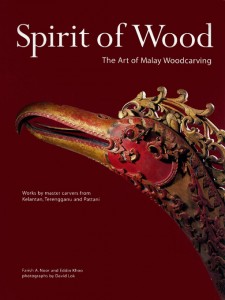 David relates that in his encounters, the most touching and memorable moments was spent with the famous Malay carver Nik Rashidin. “My frequent working visits to the carver’s place led to many sessions of frank conversations that build us into bosom buddies. From Nik Rashidin, I learnt much about beauty of the Malay culture.”
David relates that in his encounters, the most touching and memorable moments was spent with the famous Malay carver Nik Rashidin. “My frequent working visits to the carver’s place led to many sessions of frank conversations that build us into bosom buddies. From Nik Rashidin, I learnt much about beauty of the Malay culture.”
“One of the things that I acquired from him was the appreciation for such simple things like lotus designs motifs that was found on traditional Malay house mosques in the rural areas.”
“I recalled once, when Nik was having a talk with students of a local arts college, the students broke down in tears after feeling moved by the beauty of the cultures. The beauty of the cultures really did touched peoples’ hearts regardless of language barriers. They are able to experience the carver’s persistency and sacrifices.”
David’s personal experience led him to believe that one’s ethnicity and language should not be a barrier for people to mingle together. “Every one of us, old and young, rich or poor, are born of the same race, the human race. It’s incumbent that we should not let our physical differences divide us.”
“As we drop our preconceptions towards each other and be humbled to learn from each other, that’s when we can enter into true and mutual understanding of each other.”
“Imagine if a mamak store sells only teh tarik and roti canai and nothing else, wouldn’t it be boring? Let’s look at the Chinese that came to Malaysia before independence. We used to identify ourselves as Hokkiens, Cantonese, Hakkas and Teochews; but now we live as one community.”
It isn’t just mere talk, David has strived to remove every racial barrier from his life. “In the advertising industry there are no racial baggage, there are no extremes. If one is sincere and truthful we will find and gain many friends.”
“From where I used to be, it’s a competitive world in the advertising industry. Here there is no room for racial division. What counts is your abilities; every one’s focus on producing their best to complete their masterpieces.”
While chatting about his work, David eventually touched on his friendship with the renowned advertising guru and movie director, the late Yasmin Ahmad. “I had known her since 1993. Her wittiness, cheerfulness, humanity and gender beliefs are truly unique and embracing. It is still so refreshing remembering her.”
“There was once she was frantically sending SMSes to all her friends, asking us to donate RM 7,000 to help a makcik in Terengganu purchase a meat grinder to produce lekor. It was to enable her to be financially independent. In a matter of days we managed to help collect that amount for her!”
“There seldom were things that were taboo for us to talk about. Our race didn’t lead to any ill-feelings between us. In her eyes, when we see a person what we see is who the person is, nothing more nothing less. She would often ask ‘Why let our skin colour segregate us?’”
“For me, culture and language are the excellent means for the races to know each other better. Spoken language has a way of resolving unnecessary misunderstandings. If we were to translate what we say into writing, there may be room for mistranslation and misunderstanding.”
“Of course an individual’s cognition and ability to discern is important. If someone’s speech were intentionally misinterpreted, if we who can think through and discern rationally, we will be able to avoid being misled.”
Sounds like gems of speeches for the gallery, but David has live through the personal experiences himself. For this reporter, the comment he made regarding national integration left an indelible impression. “National integration doesn’t come overnight; it most assuredly doesn’t happen just because we celebrate Merdeka together.”
“Every day, every minute is a unique moment for every one. We shouldn’t be feeling afraid; if fear abounds there’s no space for interaction. Every one of us needs a heart to heart encounter, with sincerity and cordiality to build mutual friendship.”

